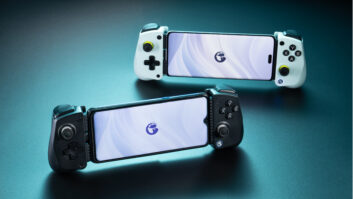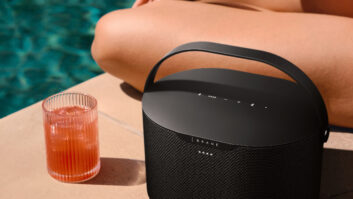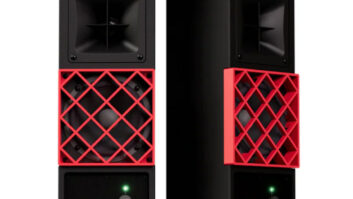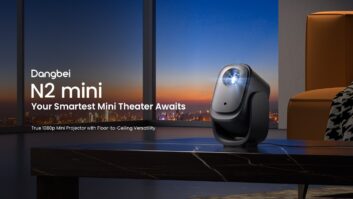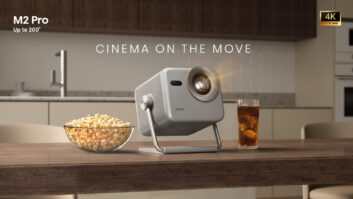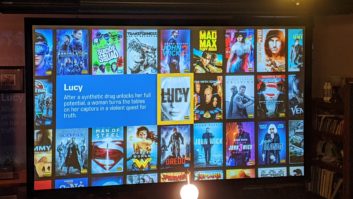Las Vegas — Samsung is coming to International CES with a live demonstration of an upgraded, backward-compatible, over-air DTV standard that would enable broadcasters to transmit TV programs to portable and mobile devices, including cellular phones, installed car TVs and battery-powered handheld TVs.
The A-VSB (Advanced Vestigal Side Band) upgrade to the current 8-VSB standard could be implemented by broadcasters at low cost, possibly with just a software upgrade, said John Godfrey, VP of government and public affairs for Samsung Information Systems America, a corporate R&D lab. Without hampering reception by current DTV sets, A-VSB would enable stations to broadcast HD signals to future DTV sets and portable units with improved reception while sending standard-definition (SD) to in-vehicle mobile receivers at highway speeds, he contended.
Samsung has teamed with Sinclair Broadcast Group to promote the standard to the Advanced Television Systems Committee (ATSC), which previously had adopted 8-VSB as the U.S. DTV standard and has begun formal tests of A-VSB, Godfrey said. The tests could be completed in early 2007, and adoption could occur as early as the first half of 2007 if the committee likes what it sees, he said.
Without scuttling 8-VSB’s current modulation scheme, the proposed standard will improve 8-VSB’s ability to cope with dynamic, or rapidly changing, interference of the type occurring when a vehicle is in motion or when pedestrians or vehicles move past a handheld digital TV in a public setting.
8-VSB “was optimized for the living room with stationary units,” Godfrey contended. “It has not been able to transmit to car or handheld receivers,” whose screens would freeze under such conditions, he explained.
One of the options available in the A-VSB standard, he added, would enable terrestrial broadcasters to reach homes and apartments whose over-air signals are currently blocked by tall buildings or mountains. The option would enable broadcasters to build additional towers whose signals could be synchronized with their main towers in much the same way that satellite-radio providers synchronize the signals from orbiting satellites with ground-based repeaters.
A-VSB was proposed to ATSC in December 2005 and demonstrated in April 2006 at the National Association of Broadcasters convention. Here at CES, the invite-only demonstrations will be the first to use battery-operated handheld TVs, which Samsung will demonstrate in moving vehicles on Las Vegas streets and highways, Godfrey said. The portable TVs, all prototypes, might also be demonstrated inside the convention center, the company said at press time.
The demo models, which will receive content from a mountain-top Sinclair Broadcast Group transmitter, feature diversity tuning and two 6-inch external antennas. “With more sensitive tuners or higher power broadcasts in the future, maybe we can get to smaller antennas or maybe even go to one antenna,” Godfrey said, but for use in a laptop or car TV, dual antennas aren’t an issue.
The first types of consumer devices incorporating A-VSB would likely be laptop cards, handheld battery-operated TVs, cellphones and after-market and OEM systems for vehicles.
The technology could compete at multiple levels with the proposed MediaFLO and DVB-H (Digital Video Broadcasting-Handheld) technologies, which were designed to deliver TV and other video content on a subscription basis to cellphones, other handheld devices, and vehicles. A-VSB, for example, could offer a no-subscription alternative to MediaFLO and DVB-H because it would enable cellphones to receive broadcasts from local-market terrestrial DTV stations. On the other hand, local TV stations could adopt a subscription model to broadcast multiple channels of content from multiple broadcast and cable-channel networks to mobile and portable devices in their markets, Godfrey said.
Samsung telecom group is developing DVB-H and MediaFLO handsets, and cellular carrier Verizon Wireless is expected to launch MediaFLO service in select markets in 2007.
HOW A-VSB WOULDWORK
A-VSB incorporates one mandatory and two optional technologies that work like this:
Broadcasters transmit a supplementary reference sequence (SRS), or reference, signal. Current-generation HDTVs would ignore the signal, but an SRS-equipped receiver would look for the signal and lock onto it continuously. “Because it [the tuner] knows what it should receive, it compares what it sees to what it knows it should receive,” said Godfrey. The tuner then compensates for the difference.
The SRS signal would improve resistance to dynamic interference encountered by A-VSB-equipped home TVs and by portable models in use when the owner is stationary or walking. An A-VSB option called Turbo Code, however, would improve reception in moving vehicles.
Turbo Code works like this: A TV station that broadcasts its main program in HD would set aside some of its spectrum to send out one or more Turbo-Coded streams at SD resolution or lower for reception by installed in-vehicle devices at highway speeds or by handheld devices watched in vehicles traveling at highway speeds. “To reach mobile devices that might be moving at car or train speeds, in addition to SRS, the broadcaster must carve out part of his signal and Turbo-code it,” Godfrey explained “If the broadcaster is going to continue broadcasting his HD main program, there isn’t enough bandwidth left to transmit an HD Turbo stream to mobile devices at the same time — so the Turbo stream must be SD or lower in resolution.”
The Turbo-Coded stream uses double- or quadruple-redundant coding to increase signal strength in high-speed applications, Godfrey explained. Turbo Code was tested in cars traveling 80mph in the Buffalo and Baltimore markets, and in a laboratory simulation, it delivered broadcasts to receivers traveling up to 170mph, he said.
Here at CES, Sinclair Broadcasting will transmit SRS and Turbo Code signals to battery-operated handheld TVs in moving vehicles.
Another optional A-VSB technology is called “single-frequency network,” a delay signal that broadcasters could insert into their transmission to synchronize the simultaneous transmission of a program on their assigned channel from multiple towers in a market. By filling in coverage gaps, the technology would further improve mobile and portable reception but also improve reception by legacy DTV sets in homes where over-air line-of-sight signals might otherwise be blocked, Godfrey said. Synchronization is needed because the reception of two signals slightly apart in time would confuse the tuner and cause the screen to go black, he said.
If they adopt SRS, broadcasters who transmit a single HDTV program would encounter no tradeoff in the resolution of a signal sent to legacy and future DTV sets, Godfrey contended. At its highest setting, he explained, the SRS signal would use only 2-3Mbps of the 19.4Mbps of bandwidth allocated to DTV stations, “and most HDTV broadcasters are not using the full 19.4Mbps for the main HD program,” he contended. “MPEG-2 encoders used by broadcasters are so good now that even for rapidly changing images in sports broadcasts, 17Mbps is fine for a completely high-definition picture without tradeoffs,” he contended.
A few stations might run into tradeoffs, however, if they broadcast one HD signal and two to three multicast standard-definition (SD) signals simultaneously.
The Turbo Coding option, which uses up much less bandwidth than SRS, is scalable up to 600kbps, which could suffice for improved reception on handheld devices with screens up to 5 inches, he added. For in-car TVs with 7-inch to 10-inch screens, a bit less than 4Mbps of bandwidth could be enough, he said.
If an HD station pushes Turbo Coding to 4Mbps for “big-screen” mobile applications, and sets aside the maximum 3Mbps for the SRS signal, only 12.4Mbps would be available for the station’s main HD program. At that data rate, “It’s still HD but a bit of a challenge,” Godfrey admitted.
As an alternative for smaller independent stations delivering only SD streams, Godfrey cited the potential for a subscription service that the station could offer to stream multiple channels of content to portable devices.




